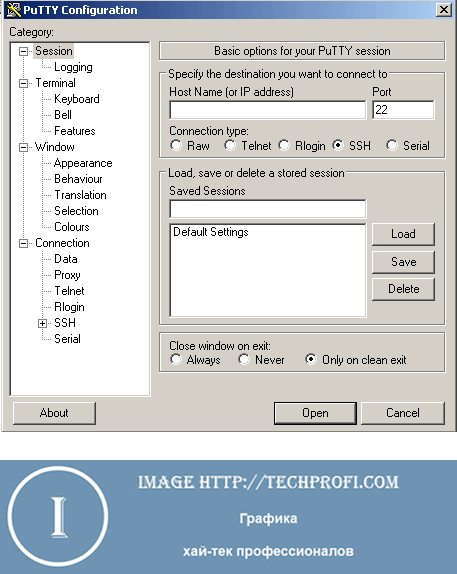

Then you don't have to provide the username and password because it is implicit. This is an inofficial portation of PuTTY for the Windows Store. It supports several network protocols, including SCP, SSH, Telnet, rlogin, and raw socket connection.
#Powershell putty ssh serial
The risk is that someone can steal you key file.įinally, you can also start your process or scheduled task with credential which has already the permission to authenticate on the remote server. Putty (Unofficial) PuTTY is a free and open-source terminal emulator, serial console and network file transfer application. That's a common configuration (provide either key file or username/password) because administrators are lazy. But the SSH service on the remote server must be configured to accept key files without providing a username and a password. In the context of a script, another way to login is by using the KeyFilePath parameter and a key file.

Only the UserName parameter can be used, and you will be asked for a password. With the SSHTransport parameter, you cannot use the Credential parameter. When you use Get-Help or Get-Command -Syntax, there is a section named Syntax and where you can find all parameter belonging to the same parameter set. You are using parameters which belong to different parameter sets. Of course, you can also work with Invoke-Command: Invoke-Command -HostName -UserName : -ScriptBlock Traiano.

ssh folder of your user profile. You then have to enter your password, and you are in. If you sign on the first time on the remote host, you have to acknowledge the key fingerprint by typing "yes." OpenSSH will store the fingerprint in the known_hosts file in the. If you are working with an Active Directory account, you have to pass the user name with the UserName parameter using this syntax. PowerShell uses the user name used to log on to your local machine. The HostName parameter ensures that PowerShell will use SSH as the transport protocol. PPK ) so that you can use it with the WinSCP. Once you have loaded one of these key types, you can then save it back out as a PuTTY-format key (.

However, the sshd service only needs to run on the remote machine. 'Using the Import command from the Conversions menu, PuTTYgen can load private keys in OpenSSH’s format and ssh.com’s format.
#Powershell putty ssh install
Note that you have to install OpenSSH on the local and on the remote machine for this work. You can now test your connection on a PowerShell 6 console. You just enabled PowerShell remoting for SSH.


 0 kommentar(er)
0 kommentar(er)
